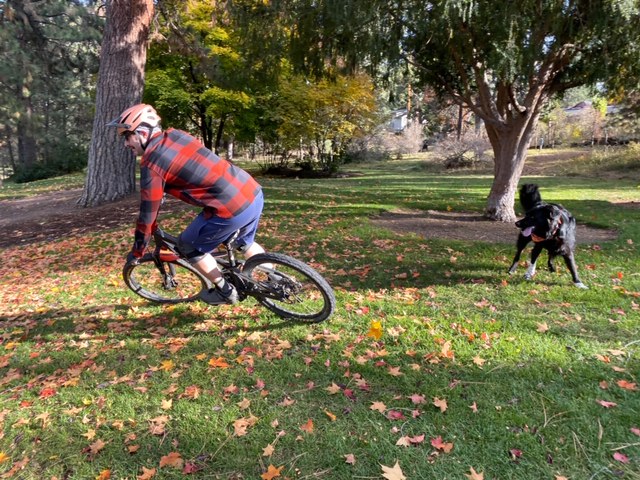
It’s one of the most common Mountain Biking Injuries, and Jason Wright knew instantly that his collarbone was broken.
In May, Wright was mountain biking on Bend’s Tiddlywinks trail when he made a sharp right hand turn. His left shoulder collided with a tree, fracturing his clavicle.
The injury “was the most painful thing I’ve ever been through,” said Wright, a 38 year-old Bend resident and seasoned mountain biker. Soon after, he underwent surgery to stabilize his clavicle with the placement of a titanium plate and eight screws.
To aid in his recovery, Wright is being treated by Rebound physical therapist Pablo Gomez at BOSS Sports Performance Clinic.
At first, Wright worked with Gomez on regaining range of motion in his shoulder through gentle exercises and stretching. He has progressed to strengthening his arm and shoulder.
“I’ve got the motion (in my shoulder), now it’s just making it strong again,” noted Wright, who aims to return to mountain biking in mid-August.
Getting back in the saddle after an accident something Wright has done before. In 2018, he separated his right AC joint (shoulder) from a crash; last year he fell off his bike and fractured his right elbow.
Mountain Biking Injuries are almost inevitable, according to Rebound physical therapist and avid mountain biker Lindsay Lund.
“People lose control of their bike, whether trying to push themselves on more technical terrain or going faster than they should,” she explained. “It comes down to the risks riders are willing to take on the trails.”
Many injuries can be traumatic like clavicle fractures and AC joint sprains, but the majority tend to be overuse or due to faulty position or biomechanics, noted Lund.
“Sitting on a bike in a forward position for a prolonged period can put stress on the shoulders, neck and low back,” said Lund. And the repetitive motion of flexing and extending one’s knees while pedaling can cause pain over time if your hips, knees and ankles aren’t moving properly, she added.
One of the most effective ways to combat repetitive use injuries, said Lund, is to see a physical therapist for a thorough movement assessment and individualized exercise plan. “Dry land” mobility and strengthening exercises will help balance your movement pattern and prevent injuries.
While it’s easy for mountain bikers to focus solely on riding trails, it’s important to also do exercises “to supplement for strength and mobility,” said Lund.
Physical therapists can also offer guidance to recreational riders on proper bike fit. This cannot be overlooked when addressing injury recovery or prevention. During a bike fit assessment, a PT can address bike frame size, seat height and handlebar position to reduce stress on the body.
Click here to schedule an appointment with a physical therapist. We want to help you ride pain-free!
